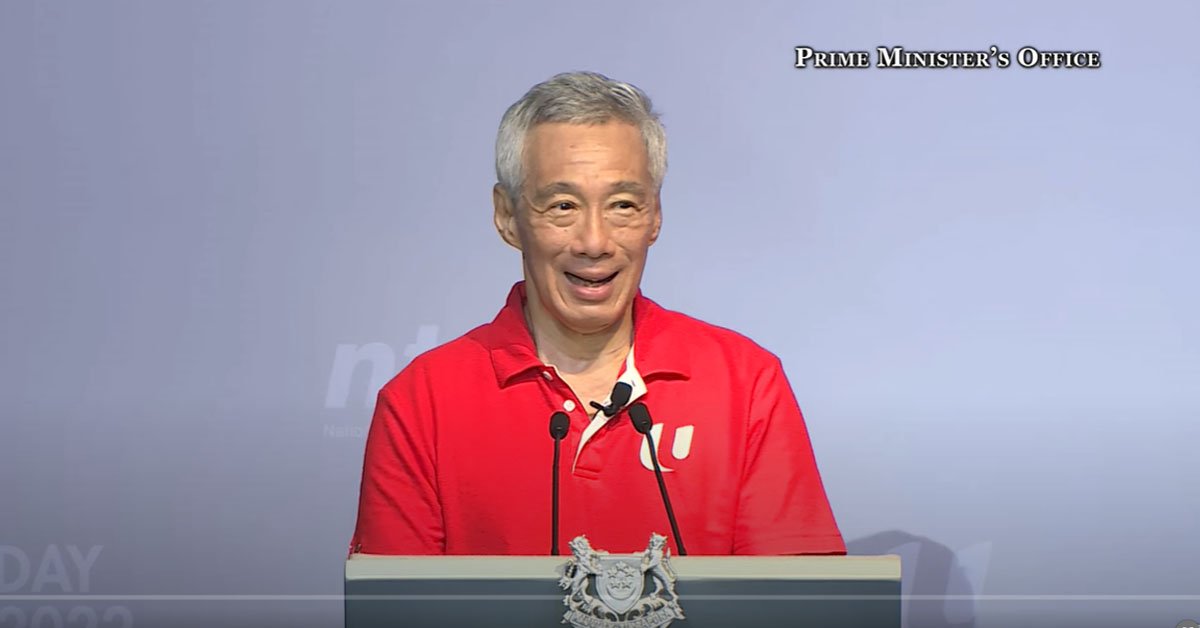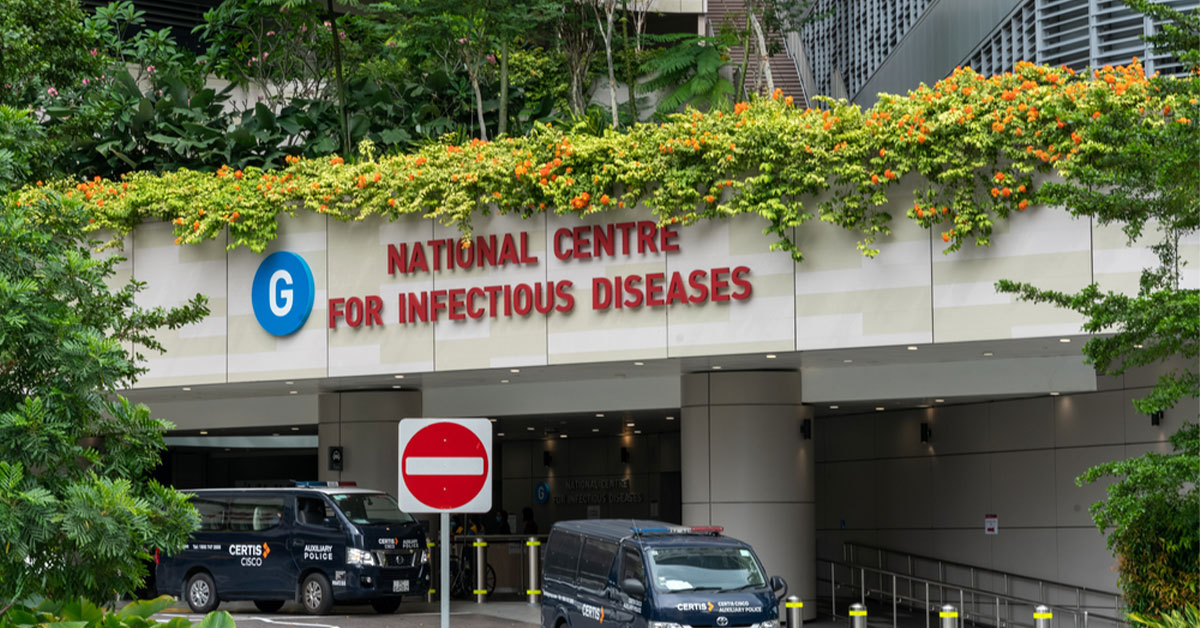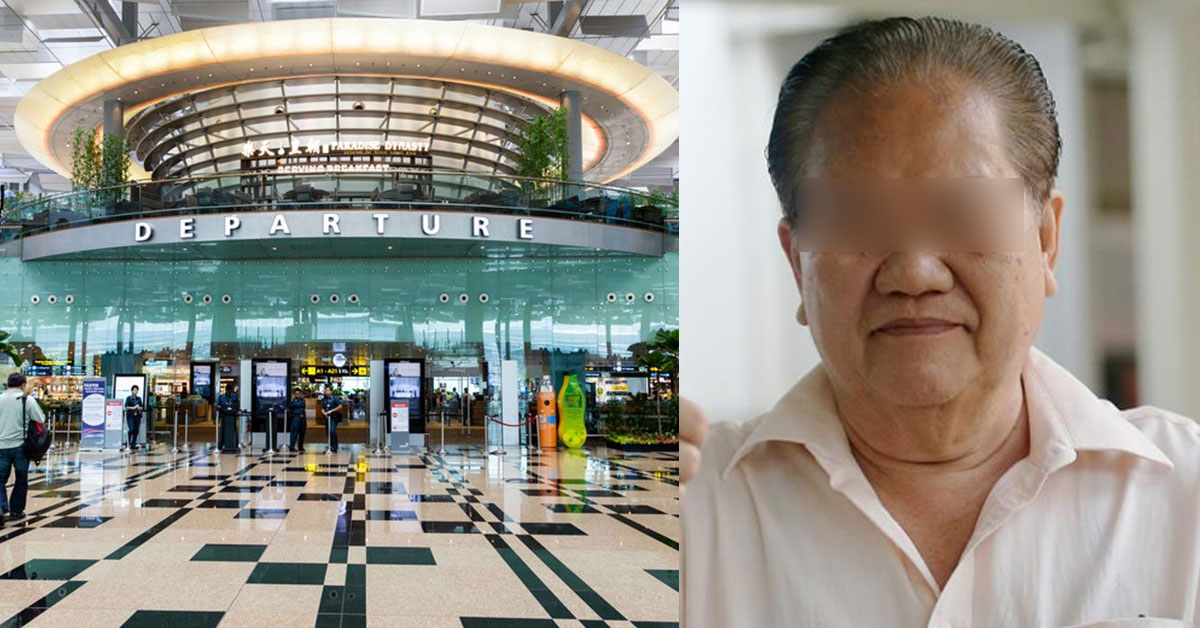May Day rallies might sound like some pre-emptive speech before a disaster or apocalypse.
Prime Minister Lee Hsien Loong’s speech might not be as riveting (or possibly horrifying) as an “End of Days” address, but it highlighted numerous aspects that are foundational to the success of Singapore and Her future plans going forward.
Here are ten things you should know about PM Lee’s Rally Speech at D’Marquee, Downtown East.
The History of NTUC
While we read and study all about People Action Party’s (PAP) rise to power in our Secondary school history syllabus, the National Trades Union Congress (NTUC) is scarcely talked about, even though it has been around for almost as long as Singapore has established Her own autonomy after slowly breaking away from British colonialism.
In 1961, NTUC was formed from 12 unions that stood by the PAP, while the other 82 out of 100 had sided with Barisan Sosialis, which was a pro-communist political party.
Hence, the year of 2022 officially marks NTUC’s 60th anniversary since its establishment.
PM Lee offers rare insight into NTUC’s initial troubles of persuading the other unions to become their allies, naming the pioneers Devan Nair, Ho See Beng, and Mahmud Awang, who led the charge.
Throughout the milestones that Singapore faced, be it the fight against communism, the Separation from Malaysia and sudden Independence, NTUC and PAP had bonded over these struggles.
When the British announced their intention to withdraw all of their military forces from Singapore in 1967, thus leaving the small island undefended, there was “widespread industrial strife” which discouraged foreign investments.
The Government was forced to introduce new laws which restore employers their rights to hire and fire their employees, though this was at the expense of the Union’s control and powers.
Together with NTUC, the government reassured the workers that their basic rights are left untouched and would be protected because economic slavery is not a good look on anyone.
Despite their best attempts, union memberships fell by one quarter four years into Singapore’s independence.
The Modernisation Seminar of 1969
Besides the decline in union membership, Singapore and NTUC were confronted with another problem: industrialising the economy and rapid urbanisation to keep up with the rest of the world that was surely heading towards a capitalist structure.
At the Seminar, Devan Nair had phrased the situation aptly, where the Labour Movement was caught “in a race between modernisation or extinction.”
Survival of the fittest; modernise and remake the pieces of and dregs or die out.
The Modernisation Seminar was pivotal in setting the future course of NTUC.
It launched social enterprises and cooperatives such as NTUC Income and FairPrice. It brought in childcare centres, a service that was all but absent at that time.
Fortunately, the employers and unions got along, later forming the Singapore National Employers Federation (SNEF), a trade union for the employers.
That is the tripartite that grounds Singapore: the government, NTUC, and SNEF.
Of Recessions and Crises
Since Singapore is a small island city-state which imports and exports almost everything, its only and most valuable resource has always been its manpower.
In spite of being a small red dot, we tided through the major recessions and various crises all the same.
In 1985, a major recession struck, the first that Singapore had ever faced since Her independence. It crept up slowly, starting with the 1979 Energy Crisis which led to soaring energy prices, and other major economies tightening their monetary policies in order to control inflation.
Back then, PM Lee was working in the Ministry of Trade and Industry (MTI). He and the NTUC Secretary-General Mr Ong Teng Cheong gathered the union leaders for a meeting in the conference hall.
While it was a dark and sombre time for the economy, it basically drafted how Singapore would react in times of recession.
For the sake of dissuading employers from retrenching workers to cut costs, they decided to cut the employers’ contribution from 22% to 15% until the economy stabilised, a tactic that was beneficial to both the employers and employees.
For employers, they were technically paying their employees less which saved on business costs, while the employees’ disposable income was left untouched, since the money accumulating in their Central Provident Fund (CPF) accounts were meant for their retirement or in times of medical need.
Even in the Tripartite Advisory on Managing Excess Manpower and Responsible Retrenchment now, retrenchment is always treated as a last resort.
Initiatives After the Coronavirus Pandemic
Compared to the Asian Financial Crisis of 1997, the SARS outbreak in 2003, the 2008 US Financial Crisis, the coronavirus pandemic seems and feels much longer.
“We are going through the crisis not of a decade, but of a generation,” PM Lee says.
PM Lee highlights NTUC dedication to protecting the workers: when the retrenchment was unavoidable, they at least ensured that the layoffs were carried out in a fair and responsible manner.
This included making use of all the government schemes available to keep these unemployed workers busy and constantly busy.
Whether it’s the Jobs Support Scheme (JSS), Jobs Growth Initiative (JGI), and the Self-Employed Income Relief Scheme (SIRS), all of them were put to good use.
These initiatives helped employers hold onto their staff and ensured that employment rates wouldn’t plunge drastically.
Towards the tireless effort that union leaders and employers put in, where they made short-term sacrifices to keep their businesses going, PM Lee extends a word of utmost gratitude, since this attitude was crucial for helping Singapore through the pandemic.
Better Prospects for the Future
Now that the past history and contributions have been covered, PM Lee moves on to the projection for the future.
He acknowledges that while COVID-19 is tentatively under control with increasing vaccination equity that minimises the spread and severity of the virus, the aviation and tourism industries will take a long time before they fully recover.
With the Biden administration signing a huge stimulus package for the economy, and China’s economy picking up steam, it has been forecasted that there will be 4% to 6% growth.
If any setbacks to the global economy are disregarded (read: Ukrainian humanitarian crisis), and the COVID-19 situation remains stable, it’s likely that Singapore can attain growth that’s higher than 6%.
But that does not mean that Singapore is without pre-existing issues.
The construction sector, for instance, is facing rising costs and manpower shortage as migrant workers have chosen to go home. The severe disruption to the original plans needs to be addressed, and ensure that the burden is shared more fairly between the different parties involved.
Due Caution Against COVID-19
With regards to the COVID-19 pandemic, PM Lee cautions the public to not let down their guards.
Much of the COVID-19-related restrictions have been eased, but the government is still wary and on the lookout for new variants of concerns.
He likens the pandemic situation to a marathon where it’s better to go slow and steady, for the sake of the public’s health and safety. He also makes a subtle jab at some countries who have completely let loose, thus allowing another viral wave to slam into their shores.
If anything, PM Lee wants to avoid having to take drastic measures like the Circuit Breaker in 2020.
He gives his thanks to the frontline healthcare workers who have been testing, vaccinating, and treating patients, while placing their own lives on the line.
For the affected workers of the aviation industry, they have reforged their expertise and skills, becoming patient care ambassadors, contract tracers, and Safe Distancing Ambassadors.
PM Lee doesn’t forget about the construction workers either, who arguably suffered the most restrictions and clustered outbreaks by virtue of how their living spaces are like.
The Prime Minister also reminds employers not to become over-reliant on government support, since they are more akin to artificial life support. It won’t cure the root of the problem, nor will the assistance last forever.
Eventually, small and medium enterprises, local companies, have to find their own way to survive and thrive again.
Age of Digitalisation
Among the Grand Plans that Singapore has made and intends to achieve by the mid-century, going digital and exploring cyberspaces and security is part of the agenda.
Although the pandemic was horrible, it was an unexpected boon too; in the sense that it catalysed the digitalisation of businesses in most industries.
For instance, the government has been trying to encourage hawker centres to go digital for years, with hardly any success.
Most hawker stalls didn’t think that digitalisation would be worth the investment—what’s with having to pay commission for said digital transaction service, and do you know how annoying having to do cash and digital settlement is, when the amount doesn’t tally?
But when the Circuit Breaker stopped indoor consumption of food, hawkers had no other alternative but to go online, unless they wanted to shut down their business for good.
An entrepreneurial second-generation hawker, Melvin Chew, stepped up to the plate by creating a Facebook called “Hawkers United – Dabao 2020”, which became a space where hawkers could advertise their own food.
The software engineer even created Take.sg, a simple order form on WhatsApp, which made it easier for older hawkers to take their business online.
Of course, there were other hawkers that jumped to food delivery platforms like Grab, Deliveroo, and foodpanda.
Those three listed companies made a serious killing in terms of revenue where food and groceries are concerned.
Now, many hawker stalls also have the e-payment option, where customers are allowed to e-pay through QR codes.
From Labour to Automation
Ever since the beginning of industrialisation, we have always joked about robots taking over the world or stealing manual jobs from people.
It’s undeniable that automated robots are more superior than their human counterparts because they can work tirelessly without breaking a sweat and they’re built with precision and accuracy in mind.
PM Lee is an active proponent of automation, sincerely believing that it can ramp up efficiency greatly.
He’s not wrong either as he brings up the famous and long-standing Pet Lovers’ Centre, which has upgraded their warehouse with a new automated storage and retrieval system, designed and supported by Enterprise Singapore.
Although its physical stores were temporarily closed since they weren’t deemed as essential jobs, they received a torrent of online orders for various products.
The upgraded warehouse doubled both the productivity and warehouse storage capacity.
Sustainability is Key
If there’s a constant trend in these big speeches from governmental figures, it would be the emphasis on sustainability.
Finance Minister Lawrence Wong speaks of carbon taxes and Singapore’s grand goal of reaching net zero emission by mid-century, PM Lee elaborates on one of the solutions that the country is implementing.
He brings up Sunseap, a clean energy solutions provider company based in Singapore, who is in charge of installing one of the largest solar farms in the Straits of Johor off Woodlands.
Surely, some of us must have noticed that there are now solar panels on our HDB rooftops and above some surveillance cameras.
Singapore might not be the windiest place, nor does it possess a fast stream of water for hydraulics but living near the equator definitely means we get an abundance of sunlight.
Sunseap similarly faces a manpower shortage since installing solar panels is hard work, done under the blazing sun, which is usually left to the migrant workers.
The CEO of Sunseap believes that with a bit of job design and support from NTUC, he will be able to train younger Singaporeans to take up the job as solar technicians and engineers.
Lifelong Learning
Last but not the least, PM Lee talks about lifelong learning.
Nothing about expiry dates though, don’t worry, he’s seen his fellow MP getting enough backlash from a simple Parliament speech to know that he shouldn’t touch that subject with a fifty-foot pole.
Instead, PM Lee reminds the workforce that the government is investing heavily in Skillsfuture and is pledging to spend $1.4 billion more over the next few years.
As long as the workers learn something more useful and make themselves more palatable to the employers, then it’s technically a mission accomplished.
Presently, e2i is doing brilliant work in building the training ecosystem.
NTUC hasn’t fallen short either, forming over 600 Company Training Committees (CTC), who are tasked to find capability gaps, create new skill sets, and train workers for their companies.
In essence, both organisations are assisting the workers in acquiring the skills and capabilities necessary in advance, to ease the transition of a job switch.
Life is all about constantly learning and contributing what we can to society.
Honestly though, PM Lee’s May Day Rally speech sounds like a social studies essay for ‘O’ Levels.
Featured Image: YouTube (Prime Minister’s Office, Singapore)



